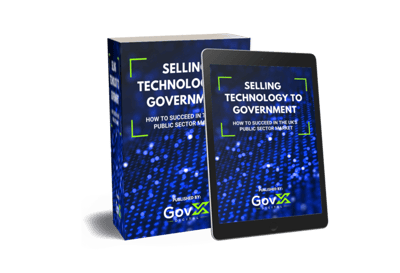Selling Technology to Government
The relationship between vendors and buyers is critical to the success of technology in government. Our new ebook lifts the lid on the government market, helping technology providers to better understand their customers.
There's a common misconception that the public-sector sales cycle is longer than for other industries. The reality is that when you compare similar deal sizes, public sector procurement takes no longer than other verticals. What is true is that the governance structure is more complex, and the decision-making process can seem opaque.
 As in any market, it’s vital that vendors take a customer-centric view, taking time to research, think and respond accordingly to what they find. GovX Digital works with over 300 public sector organisations here in the UK, mapping out service commissioning and technology procurement as part of our work to create the largest video-based public sector community of practice on the planet.
As in any market, it’s vital that vendors take a customer-centric view, taking time to research, think and respond accordingly to what they find. GovX Digital works with over 300 public sector organisations here in the UK, mapping out service commissioning and technology procurement as part of our work to create the largest video-based public sector community of practice on the planet.
This Selling Technology to Government guide, put together by one of our expert contributors, David Wilde, is intended to help the vendor community better understand who to engage - and how to engage them - within the UK public sector.
David has extensive experience in the public sector technology market, as the former CIO of Waltham Forest, Westminster City and Essex County Councils. As he says in the introduction to the ebook: “I’ve dealt with many vendors and, all too often, their stories begin with a message that goes little beyond - ‘I have the best product in the market. This is the one that you really need in your service - so just buy it from me’.”
Instead the conversation needs to be framed around the specific context of the government body or local authority. Key points to bear in mind when selling to government include:
-
There is a naivety in some vendor markets about what government really is - they believe it's a monolithic but in reality it is made up of smaller agencies, with their own decision-making processes.
-
A lot of information about who makes purchasing decision is available in the public domain and relatively easy to track down.
-
Understanding the levels of local government provides context around the value, budget and range of services and responsibilities that these different organisations have.
-
Don’t be confused by job titles: in local government and the NHS, there might be 10 or 15 different job titles for the role of CIO.
-
Frame your questions around how you can contribute to specific outcomes in the that community, rather than generic product features
-
Take time to look at the organisation’s corporate plan. It will give great insights into what drives them and what is politically setting their direction.
-
Take a hyper-local approach - drill deep into the specific issues faced by a particular authority. What are the real pressure points and how can your offering solve them?





